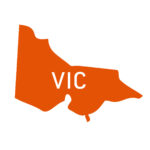Regional Round-Up

Welcome to the regional round-up – all the latest livestock news from the paddocks, direct from our managers across Australia…
 |
National overview – Chris Howie Now we’re past the EOFY, don’t underestimate the quick run of numbers that will appear in July, having been held back to mitigate taxation with the prices of the last 18 months. Wool, lamb, mutton, grain and cattle are often held until July to soften the tax bill and create a bubble of supply that can put a brief dip in the market. Although there won’t be much sleep lost at the current prices, it’s funny how much effort we put into minimising tax compared to improving our production and marketing outcomes.It’s also the time of year that the lamb jobs start to kick. Up until last week prices were holding and, on some grids, dropped back under $8.Forwards have appeared with $8.70 for XB lambs into August. Auction lamb sales are starting to see quality trade lambs moving past the $9 realm, and heavy export lambs are well into the $8s. However, any secondary drafts are not seeing this competition and remain in the high $7s.In terms of cattle, trade cattle shortage and demand for feeders is really driving the market. Sales are continuing to strengthen, with many feedlots now operating openly across mixed breeds whilst once black was the only colour. Continuity of supply for the feedlot operations has taken priority over cosmetics and price. Hide prices have lifted from a very dull period of pricing, and there are whispers that foetal blood pricing is starting to reappear from some processors, on hooks cows that may have had an opportunity to the bull. Overall, with the potential of a very good trading period appearing in the spring, getting your trading facility set up now is a great idea. It’s vital to not miss the opportunities to buy and use your crop or future hay stubbles because you don’t have the funding in place. |
 |
Queensland – Angus Creedon The news from Queensland is that decent rainfall in June has resulted in some excellent winter crops such as oats and barley. In saying that, 65% of QLD is still drought-declared and the recent rain in areas will only provide some short-term relief. These conditions are, however, allowing producers to purchase cattle onto crop, and prevent a sell-down for those still in drought-declared areas of QLD. This isn’t a massive change from previous periods, though we’re expecting spring in northern NSW to be outstanding, given the moisture levels. Livestock prices in Queensland have continued to stay strong and in some cases have increased. We’ve seen plenty of weaners hitting the market, along with PTIC cows, and 100-day grain-fed prices have lifted 10-15c, which has resulted in a lift in the feeder steer market. We can attribute this lift to the recent rainfall and low supply – and with supply being short, the prices are not going anywhere! |
 |
NSW – Toby Hammond Weather conditions for most parts of New South Wales have been wet and cold as we progress into the winter depths of July. A lot of areas in higher elevations have already experienced snow, which has come unusually early this year, and despite the last month being bitterly cold, the moisture that’s come with it has been welcomed. Having plenty of moisture around at this time of year is a fantastic indicator for a positive spring, though the cold temperatures present challenges for producers who need to protect their livestock from the harsh coldness. Many farmers across the state will be heading into lambing or calving if they haven’t already finished or are half way through – highlighting the importance of nutrition and making sure animals are in appropriate conditions and able to seek shelter during such events. Given the abundance of feed around the areas, having livestock in a forward condition has not been too difficult to achieve.It’s worth noting that grazing crops – which had a shaky start through late March and April – are now firing away where some farmers have just started to graze their crops, or may be completing their first graze. Having this high-quality feed in the bank creates a lot of opportunity for trading livestock, as weight gains are heightened due to nutritional value in the crop. Across all categories, cattle prices are still strengthening.There’s always a winter supply gap which forces pressure on the kill and feedlotter prices, as demand in this sector strengthens. Demand’s still strong in the re-stocker sector as well, and showing no signs of coming back. Steers, for example, are costing anywhere from $1600-$1900/hd depending on weight, breed and quality, and are worth in the mid-to-high $2000’s/hd at the other end – something that’s been on the increase for the last 12 months. Lamb prices remain strong though have the potential to soften the closer we get to spring, as the supply of new season lambs hit the market. The drop in supply for this time of year is pretty usual, year-on-year, which forces prices up as demand increases. This year and last have been further exacerbated by the lack of numbers across the national herd, and flock which will take some years to recover. As the appetite grows – particularly in the cattle market for producers to trade and pay exorbitant prices for store animals – there’ll always be an expectation on the processors and feedlots to offer strong and competitive pricing, in order to maintain their supply and encourage farmers to sell. Otherwise, in seasons like we’re experiencing, farmers will be happy to sit back and put more weight on their stock. |
 |
Victoria – Michael Phelan All areas of Victoria have now received some good rains, although it’s been very late in the west and has been followed by some very cold conditions, causing growth of crops and pastures to be very slow. Rain-wise most areas are now set up for the winter, with many in central and eastern Victoria having a lot of cleaning up to do in the next couple of months after receiving some wild weather. In spring we’ll see if we get the all-important rains in September and October that really drive things in the back end of the year. We’re heading into a quieter time of year now, with lambing in full swing and most having some sort of feed on the ground.This will be the case or a month or two, before fresh sucker lambs start coming onto the market and shearing season comes around again in August, September and October. Whilst worry is still there around stocking rates and slow growth in pastures, sucker lambs may come off their mothers a little earlier in order to keep breeding stock in better condition – however, generally things are manageable.Options are still there if some minor de-stocking needs to take place as lamb prices remain strong and the fat market is also good. Price-wise, things are pretty steady from week to week on the lamb side of things, with small fluctuations depending on the location of the market. The stratospheric prices of $9-$10 Kg/CWT have not really come to fruition like some expected, but pricing has been steady and at levels that producers should be able to make some good money at. Cattle keep on keeping on and pricing just seems to keep trending upwards. If store buyers are game, they are definitely leaning towards female purchases, which at least give options down the track as opposed to simply trying to rely on making money from weight gain alone. With COVID lingering nationwide and livestock events approaching, we could be looking at another year without major events such as Sheepvention, which is already split into two events in order to cater to COVID – time will tell. |


